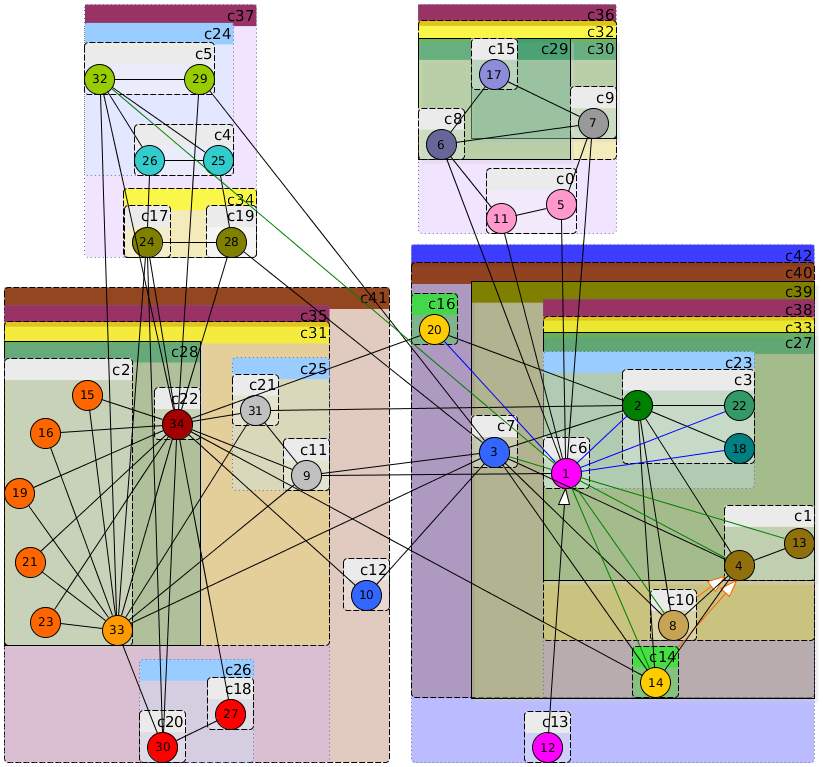Example
Input adjacency matix pentagon.hig:/Graph weighted:1 normalize:0 /Nodes 5 0 # 5 nodes starting from id=0 /Edges 0> 1 2 3> 1 4 4> 2Execute:
$ ./hirecs dataovp/pentagon.hig -oje -ror
$ ./hirecs -oje dataovp/pentagon.higOutput:
High Resolution Hierarchical Clustering with Stable State (HiReCS) started, nodes: 5, weight: 10
Initial state, mod: -0.2, nodes num: 5
Initial nodes clustering is completed
Folding is completed, mod: 0.05, dmod: 0.25, weight (both dir): 10, clusters num: 5
Folding is completed, mod: 0.175, dmod: 0.125, weight (both dir): 10, clusters: 5 (cls: 5, prop: 0) / 10, dcls: 0
Hierarchy building is completed, mod: 0.175, weight (both dir): 10, clusters: 10, root size: 5
-Root size: 5
{"root":[5,6,7,8,9],"clusters":{"0":{"owners":[5,6],"des":[0,1],"leafs":true},"1":{"owners":[5,7],"des":[0,2],"leafs":true},"2":{"owners":[6,8],"des":[1,3],"leafs":true},"3":{"owners":[7,9],"des":[2,4],"leafs":true},"4":{"owners":[8,9],"des":[3,4],"leafs":true},"5":{"des":[0,1]},"6":{"des":[0,2]},"7":{"des":[1,3]},"8":{"des":[2,4]},"9":{"des":[3,4]}},"communities":{"5":{"0":0.5,"2":0.25,"1":0.25},"6":{"1":0.5,"3":0.25,"0":0.25},"7":{"2":0.5,"4":0.25,"0":0.25},"8":{"3":0.5,"4":0.25,"1":0.25},"9":{"3":0.25,"4":0.5,"2":0.25}},"nodes":5,"mod":0.175}
Example of the Hierarchical Community Structure for the gold standard, Zachary Karate Club network. HiReCS (r200) exactly hits the global optimum Q = 0.41979:

